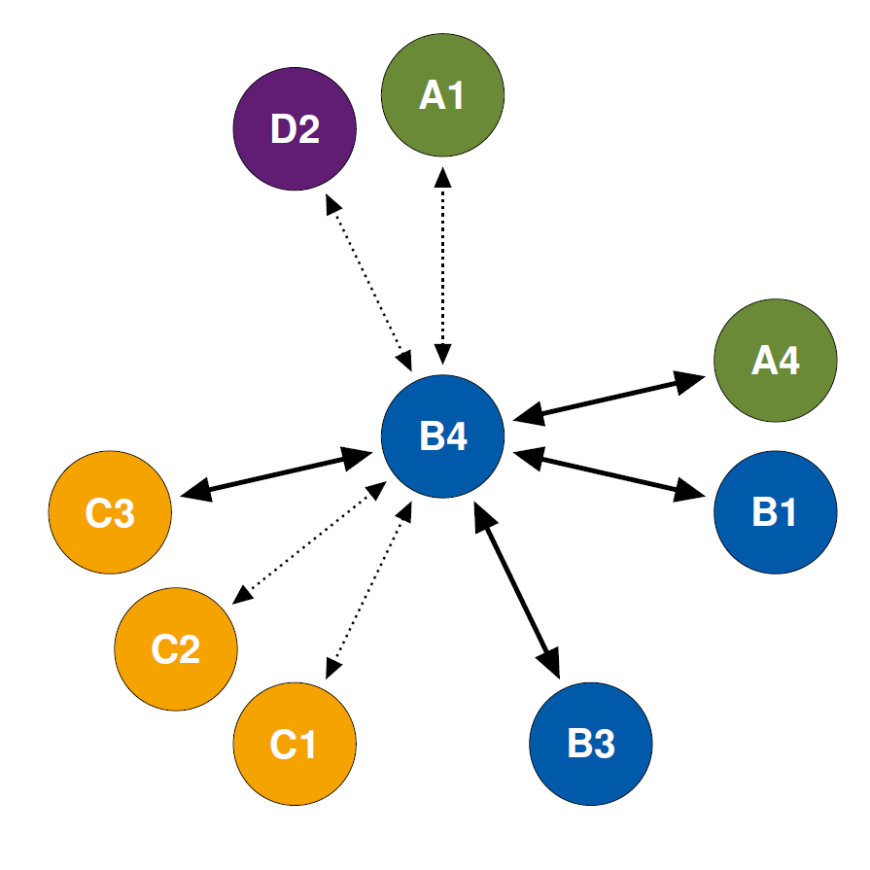The focus of the subproject B4 lies on planning transitions between available mechanisms within a communication system. In this subproject we mainly consider programmable core networks. Our goal is to optimize transitions between mechanisms in an adaptive communication system, which is based on a multi-mechanism adaptation. This optimization respectively transition planning is based on quantitative performance metrics such as throughput, latency and buffer overflow probability. To select a specific transition and the related transition time point we use network node and mechanism information. In this subproject we mainly resort to probabilistic performance evaluation models and prediction techniques known from statistics to leverage network state information. The challenge here lies in finding a transition plan that identifies the crucial performance metrics with respect to the available mechanisms and simultaneously uses accurate predictions to optimization the corresponding performance over a limited time horizon. The result of this transition planning is a plan for future transitions in addition to the associated performance metrics and corresponding confidence levels. This plan can also be in binary form given predefined transition triggering thresholds.
Given a set of possible transitions the overall objective of subproject B4 is to proactively optimize transitions for a given time horizon. A connected goal is to provide accurate performance estimates for planned transitions. However, a comprehensive, mathematical description of all available mechanisms or transitions is beyond the scope of this subproject. Here, we seek fundamental, analytically comprehensible models of mechanisms and transitions that can be integrated into performance evaluation frameworks. For this purpose, we employ methods of queuing theory, stochastic network calculus and Markov decision theory. We consider a multi-mechanism adaptation on the communication layers of media access, routing and the transport layer. Some examples of significant transitions include swapping virtual network slices with different resource allocations and utilizations, or the change of multipath transfer protocols depending on resource availability. In this subproject the focus is on transitions in a software-defined environment in the core network. Corresponding network and traffic state information is either empirically determined or assumed using known probabilistic distributions or moment-generating functions. The prediction of different network metrics is based, for example, on time series analysis. We use methods of statistical inference to determine, e.g., network state information. Ultimately, we seek generalized transition rules that can be used at runtime to guide transitions, while updating these rules based on extensive numerical performance evaluation of the scenario at hand is made offline.
Given common methods and scenarios a cooperation with other sub-projects of the SFB MAKI is of fundamental importance to this sub-project. For example, the methods of probabilistic modeling and statistical inference allow the optimization of monitoring tools that are adapted to the running application. Furthermore, given known performance-based transition rules these could be readily deployed using the “Event Condition Action” (ECA) system from the first phase of the SFB MAKI. This subproject contributes to the SFB a performance-based transition planning framework which is the basis for optimized transitions in multi-mechanism-supported communication systems.







